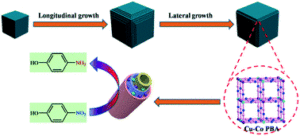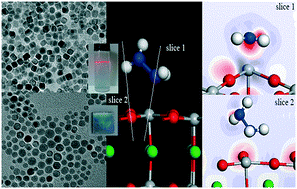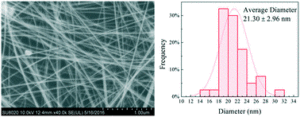The applications of nanomaterials range from environmental remediation to biological imaging. The design, engineering and growth of crystalline nanoparticles are pressing challenges, and papers tackling these hurdles are among our most impactful of 2017.
Most Cited articles:
These Papers and Highlights are off to a great start, as some of our most cited work these articles are already being recognized by the nanomaterials community.
Zhongyu Sun, Lei Zhang, Feng Dang, Yao Liu, Zhiying Fei, Qian Shao, Hong Lin, Jiang Guo, Lichen Xiang, Narendranath Yerra and Zhanhu Guo
Yong-Ping Gao, Xu Wu, Ke-Jing Huang, Ling-Li Xing, Ying-Ying Zhang and Lu Liu
Biao Zhao, Xiaoqin Guo, Yuanyuan Zhou, Tingting Su, Chao Ma and Rui Zhang
Most Downloaded articles:
These articles are receiving a lot of attention online, being some of our most downloaded articles and sparking discussion in the field of crystalline nanoparticles:
Synthesis of very thin Ag nanowires with fewer particles by suppressing secondary seeding
Dan Jia, Yan Zhao, Wei Wei, Chao Chen, Guowei Lei, Mengjuan Wan, Jingqi Tao, Shuxin Li, Shulin Ji and Changhui Ye
Hui Li, Fan Yue, Chao Yang, Peng Xue, Nannan Li, Yi Zhang and Jide Wang
 |
CrystEngComm, 2017,19, 64-71
DOI: 10.1039/C6CE01995A Metal residues confined inside the graphitic carbon layers change the work function of shells and exhibit surprisingly high chemical activities. |
Oxidation of magnetite nanoparticles: impact on surface and crystal properties
P. Schwaminger, D. Bauer, P. Fraga-García, F. E. Wagner and S. Berensmeier
 |
CrystEngComm, 2017,19, 246-255
DOI: 10.1039/C6CE02421A Oxidation of magnetite nanoparticles is dependent on Fe2+ ions migrating from core to surface and influences interactions with the environment. |
Submit your research or reviews on crystalline nanoparticles to CrystEngComm – see our author guidelines for information on our article types or find out more about the advantages of publishing in a Royal Society of Chemistry journal.














